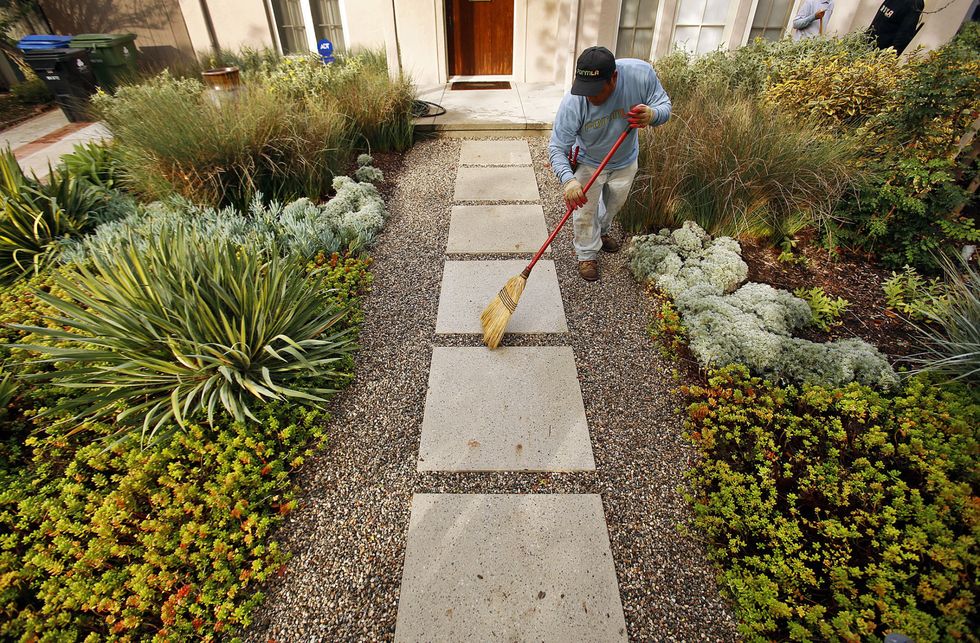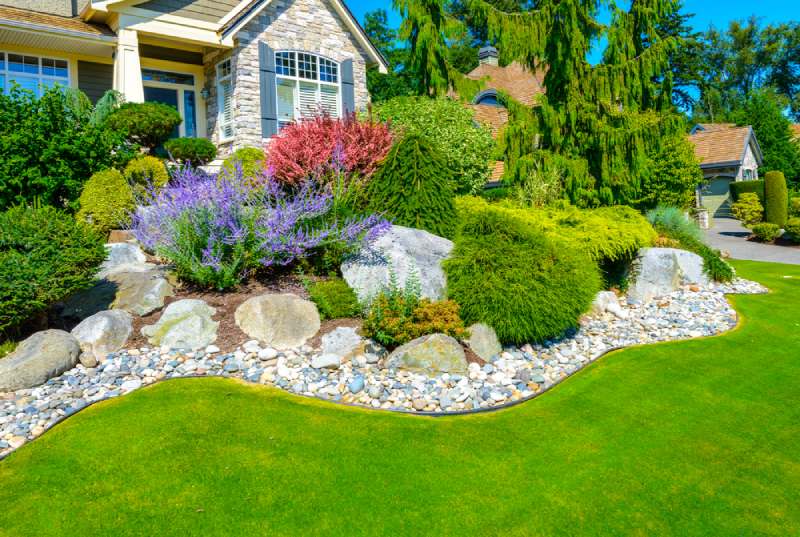A Comprehensive Overview to Designing and Implementing Effective Landscape Design Solutions
The art and science of landscaping expand past plain aesthetic appeals; they involve a thoughtful assimilation of design concepts, environmental stewardship, and useful implementation. A detailed guide to reliable landscape design options begins with a comprehensive understanding of your outside room, highlighting the value of balance, unity, and proportion. As we check out lasting techniques and the selection of proper vegetation, the implications for biodiversity and area health end up being progressively noticeable. What approaches can one employ to make sure these landscapes not only grow but also thrive in harmony with their environments?

Understanding Landscape Layout Concepts
One might wonder what foundational components add to efficient landscape design. At its core, effective landscape style rests on numerous vital concepts that assist the plan and option of aspects within a space. These concepts include unity, balance, percentage, and rhythm, each serving to develop an unified outside setting.
Unity refers to the cohesive connection among various elements, guaranteeing that they collaborate visually and functionally. Balance can be achieved via asymmetrical or symmetrical setups, allowing the landscape to feel stable and welcoming. Percentage entails recognizing the range of aspects in regard to each other and the surrounding setting, promoting visual consistency and convenience.

Analyzing Your Outdoor Area
Prior to implementing the principles of landscape style, a detailed analysis of your outdoor room is important. This first examination helps specify the range of your landscaping job and ensures that your style straightens with the distinct features of your residential or commercial property. Begin by evaluating the measurements of your area, taking exact measurements to understand the available area for numerous aspects such as patios, gardens, and pathways.
Following, observe the existing attributes of your landscape, including topography, soil high quality, and drainage patterns. These variables dramatically affect plant option and positioning. In addition, analyze the sunlight direct exposure throughout different areas throughout the day, as this will certainly impact the kinds of plants that grow in your yard.
Think about the microclimates created by frameworks, trees, and various other barriers, as they can impact temperature and wetness degrees. Take note of any existing plants or hardscape aspects that you wish to keep or remove. This extensive analysis lays the groundwork for a well-informed and effective landscaping option, making sure that your layout is not only visually pleasing yet lasting and likewise practical for several years to find.
Lasting Landscape Design Techniques
These techniques not just promote eco-friendly equilibrium yet also boost the useful and visual value of a landscape. Carrying out efficient watering systems, such as drip irrigation, lessens water waste and ensures that plants receive adequate moisture (Palm Desert Landscaping).

One more effective method is the calculated placement of trees and bushes to supply all-natural windbreaks and color, hence lowering power costs (Palm Desert Landscaping). Rain yards can be incorporated into the landscape design to handle stormwater overflow effectively, filtering system toxins prior to they go Home Page into waterways
Choosing the Right Plants
Selecting the right plants for your landscape is crucial to achieving both visual appeal and ecological consistency. The procedure starts with an understanding of your regional climate, dirt conditions, and the particular microenvironments within your landscape. Assessing aspects such as sunshine exposure, moisture degrees, and existing plants will help you choose plants that thrive in your unique setup.
Think about including native plants, as they are well-adapted to local conditions, require much less maintenance, and assistance local wild animals. Additionally, picking a diverse selection of varieties can enhance biodiversity while decreasing the risk of disease and bug outbreaks. It is important to examine the development practices, flowering durations, and seasonal colors of potential plants to create a cohesive and dynamic landscape.
In addition, think of the intended usage of the area; as an example, if the location will experience high foot website traffic, select resilient ground covers. By attentively picking plants that straighten with both your visual objectives and environmental demands, you can create a lasting landscape that not only boosts your residential property but also adds positively to the bordering ecosystem.

Execution and Upkeep Approaches
Once the ideal plants have been selected for your landscape, the focus moves to effective implementation and recurring maintenance approaches. Successful installation starts with proper website prep work, which consists of dirt testing to identify nutrient degrees and pH, complied with by modifying the dirt as required. Very carefully set up plants according to their development habits and light needs, making sure appropriate spacing to promote healthy and balanced growth.
Irrigation is an essential aspect of implementation. Develop a watering timetable that takes into consideration the certain needs of each plant continue reading this species, readjusting for seasonal modifications. Using drip irrigation systems can boost water effectiveness and minimize overflow.
Upkeep methods have to be executed to ensure the long life and vigor of your landscape. Routine tasks include weeding, mulching, and pruning to regulate growth and protect against disease. Fertilizing must be performed based upon soil tests, supplying the required nutrients without over-fertilizing.
Monitoring for pests and conditions is important; early discovery can stop significant damages. Lastly, seasonal changes to maintenance regimens, such as preparing and this link winterizing perennials for spring development, will certainly make sure that your landscape remains healthy and aesthetically enticing year-round.
Conclusion
Successful application and recurring maintenance additionally ensure the longevity and vitality of landscapes. By incorporating these elements, landscapes can be transformed into lovely, practical environments that promote biodiversity and contribute favorably to neighborhood health.
One might wonder what foundational elements add to reliable landscape layout. At its core, effective landscape design pivots on numerous key principles that direct the plan and choice of aspects within an area.Choosing the right plants for your landscape is crucial to attaining both visual charm and eco-friendly consistency. It is vital to examine the growth practices, blooming periods, and seasonal shades of potential plants to develop a dynamic and cohesive landscape.
When the ideal plants have been chosen for your landscape, the focus changes to efficient application and ongoing upkeep methods.